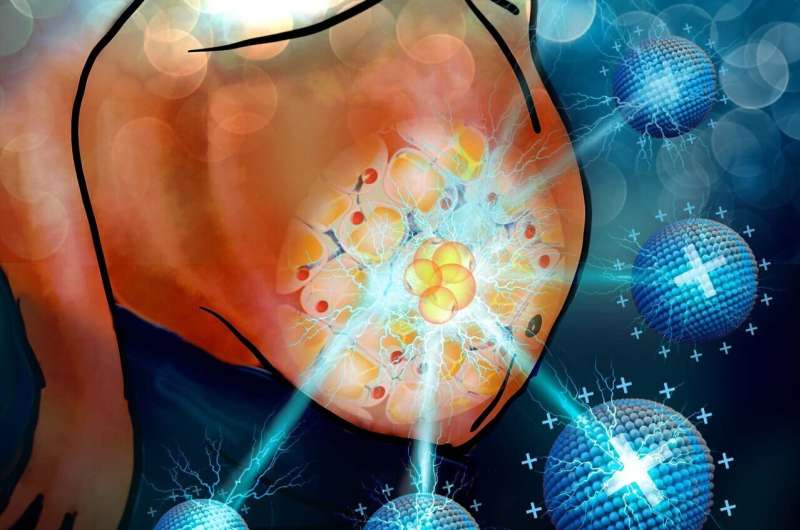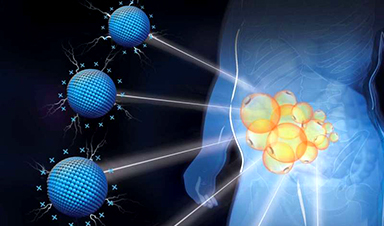Researchers have long been working on how to treat obesity, a serious condition that can lead to hypertension, diabetes, chronic inflammation, and cardiovascular diseases. Studies have also revealed a strong correlation of obesity and cancer—recent data show that smoking, drinking alcohol, and obesity are the biggest contributors to cancer worldwide.
Challenges in targeting fat cells
The ability to target fat cells and safely uncouple unhealthy fat formation from healthy fat metabolism would be the answer to many peoples’ prayers. A major challenge in obesity treatment is that fat tissue, which is not continuous in the body but is found piece by piece in “depots,” has been difficult to target in a depot-specific manner, pinpointed at the exact location.
There are two main kinds of fat: visceral fat, internal tissues that surround the stomach, liver, and intestines, and subcutaneous fat, found under the skin anywhere in the body. Visceral fat produces potbellies; subcutaneous fat can create chin jowls, arm fat, etc. To date, there has been no way to specifically treat visceral adipose tissue. And current treatments for subcutaneous fat like liposuction are invasive and destructive.
New studies use cationic nanonmaterials to target fat
Two new studies from researchers at Columbia Engineering and Columbia University Irving Medical Center (CUIMC) may have the answer to targeting fat cells depot-specifically and healthily. The papers demonstrate a new method to treat obesity by using cationic nanomaterials that can target specific areas of fat and inhibit the unhealthy storage of enlarged fat cells. The materials remodel fat rather than destroying it, as, for example, liposuction does. The first paper, published today by Nature Nanotechnology, focuses on visceral adiposity, or belly fat. The second paper, published online November 28 by Biomaterials, focuses on fat underneath the skin as well as chronic inflammation associated with obesity.
Unexpected results
And then something intriguing happened: P-G3 shut off the lipid storage program in fat cells and the mice lost weight. This was totally unexpected, given the well-established function of P-G3 in neutralizing negatively charged pathogens, such as DNA/RNA cell debris, to alleviate inflammation.
“Our approach is unique—It departs from the pharmacological or surgical approaches,” says Qiang, who specializes in obesity and adipocyte biology. “We used cationic charge to rejuvenate healthy fat cells, a technique no one has ever used to treat obesity. I think this novel strategy will open the door to healthier and safer reduction of fat.”

P-G3 helps new fat cell formation and also inhibits the unhealthy lipid storage of enlarged fat cells
In these two studies, the researchers discovered that the cationic material, P-G3, could do an intriguing thing to fat cells—while it helped new fat cell formation, it also uncoupled lipid storage from the housekeeping functions of fat cells. And because it inhibits the unhealthy lipid storage of enlarged fat cells, the mice had more metabolically healthy, young, small fat cells like those found in newborns and athletes. The researchers found that this uncoupling function of P-G3 also holds true in human fat biopsies, signifying the potential of translation in humans.
“With P-G3, fat cells can still be fat cells, but they can’t grow up,” said Leong, a pioneer in using polycation to scavenge pathogens. “Our studies highlight an unexpected strategy to treat visceral adiposity and suggest a new direction of exploring cationic nanomaterials for treating metabolic diseases.”
New applications for drug delivery, gene therapy, and aesthetics
Now that they can selectively target visceral fat, Leong and Qiang envision several applications. The Biomaterials study demonstrates a simple approach that could be used for aesthetic purposes; like Botox, P-G3 can be locally injected into a specific, subcutaneous fat depot. The investigators, who have patents pending, are now engineering P-G3 into various derivatives to improve the efficacy, safety, and depot specificity.
What the researchers are particularly excited about is developing P-G3 into a platform that can deliver drugs and gene therapies specifically to a given fat depot. This may repurpose many drugs from systemic safety concerns, such as Thiazolidinediones (TZDs), a potent but unsafe drug that is a strong modulator of fat and used to treat type 2 diabetes—but it has been linked to heart failure and banned in several countries.
“We’re very excited to discover that cationic charge is the secret to targeting adipose tissue,” Qiang said. “Now we can shrink fat in a depot-specific manner—anywhere we want—and in a safe way without destroying fat cells. This is a major advance in treating obesity.”
News
Repurposed drugs could calm the immune system’s response to nanomedicine
An international study led by researchers at the University of Colorado Anschutz Medical Campus has identified a promising strategy to enhance the safety of nanomedicines, advanced therapies often used in cancer and vaccine treatments, [...]
Nano-Enhanced Hydrogel Strategies for Cartilage Repair
A recent article in Engineering describes the development of a protein-based nanocomposite hydrogel designed to deliver two therapeutic agents—dexamethasone (Dex) and kartogenin (KGN)—to support cartilage repair. The hydrogel is engineered to modulate immune responses and promote [...]
New Cancer Drug Blocks Tumors Without Debilitating Side Effects
A new drug targets RAS-PI3Kα pathways without harmful side effects. It was developed using high-performance computing and AI. A new cancer drug candidate, developed through a collaboration between Lawrence Livermore National Laboratory (LLNL), BridgeBio Oncology [...]
Scientists Are Pretty Close to Replicating the First Thing That Ever Lived
For 400 million years, a leading hypothesis claims, Earth was an “RNA World,” meaning that life must’ve first replicated from RNA before the arrival of proteins and DNA. Unfortunately, scientists have failed to find [...]
Why ‘Peniaphobia’ Is Exploding Among Young People (And Why We Should Be Concerned)
An insidious illness is taking hold among a growing proportion of young people. Little known to the general public, peniaphobia—the fear of becoming poor—is gaining ground among teens and young adults. Discover the causes [...]
Team finds flawed data in recent study relevant to coronavirus antiviral development
The COVID pandemic illustrated how urgently we need antiviral medications capable of treating coronavirus infections. To aid this effort, researchers quickly homed in on part of SARS-CoV-2's molecular structure known as the NiRAN domain—an [...]
Drug-Coated Neural Implants Reduce Immune Rejection
Summary: A new study shows that coating neural prosthetic implants with the anti-inflammatory drug dexamethasone helps reduce the body’s immune response and scar tissue formation. This strategy enhances the long-term performance and stability of electrodes [...]
Scientists discover cancer-fighting bacteria that ‘soak up’ forever chemicals in the body
A family of healthy bacteria may help 'soak up' toxic forever chemicals in the body, warding off their cancerous effects. Forever chemicals, also known as PFAS (per- and polyfluoroalkyl substances), are toxic chemicals that [...]
Johns Hopkins Researchers Uncover a New Way To Kill Cancer Cells
A new study reveals that blocking ribosomal RNA production rewires cancer cell behavior and could help treat genetically unstable tumors. Researchers at the Johns Hopkins Kimmel Cancer Center and the Department of Radiation Oncology and Molecular [...]
AI matches doctors in mapping lung tumors for radiation therapy
In radiation therapy, precision can save lives. Oncologists must carefully map the size and location of a tumor before delivering high-dose radiation to destroy cancer cells while sparing healthy tissue. But this process, called [...]
Scientists Finally “See” Key Protein That Controls Inflammation
Researchers used advanced microscopy to uncover important protein structures. For the first time, two important protein structures in the human body are being visualized, thanks in part to cutting-edge technology at the University of [...]
AI tool detects 9 types of dementia from a single brain scan
Mayo Clinic researchers have developed a new artificial intelligence (AI) tool that helps clinicians identify brain activity patterns linked to nine types of dementia, including Alzheimer's disease, using a single, widely available scan—a transformative [...]
Is plastic packaging putting more than just food on your plate?
New research reveals that common food packaging and utensils can shed microscopic plastics into our food, prompting urgent calls for stricter testing and updated regulations to protect public health. Beyond microplastics: The analysis intentionally [...]
Aging Spreads Through the Bloodstream
Summary: New research reveals that aging isn’t just a local cellular process—it can spread throughout the body via the bloodstream. A redox-sensitive protein called ReHMGB1, secreted by senescent cells, was found to trigger aging features [...]
AI and nanomedicine find rare biomarkers for prostrate cancer and atherosclerosis
Imagine a stadium packed with 75,000 fans, all wearing green and white jerseys—except one person in a solid green shirt. Finding that person would be tough. That's how hard it is for scientists to [...]
Are Pesticides Breeding the Next Pandemic? Experts Warn of Fungal Superbugs
Fungicides used in agriculture have been linked to an increase in resistance to antifungal drugs in both humans and animals. Fungal infections are on the rise, and two UC Davis infectious disease experts, Dr. George Thompson [...]





















